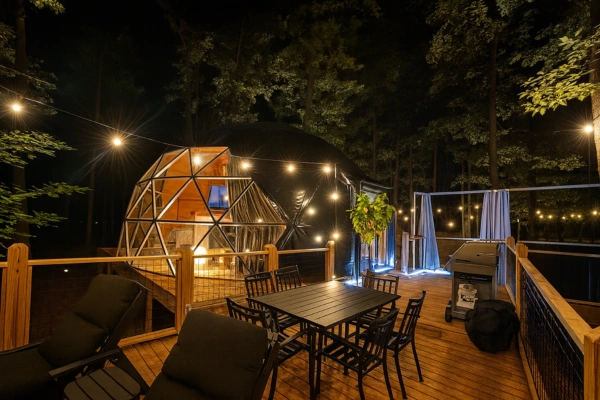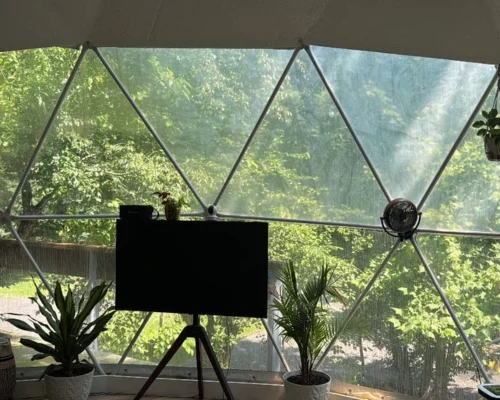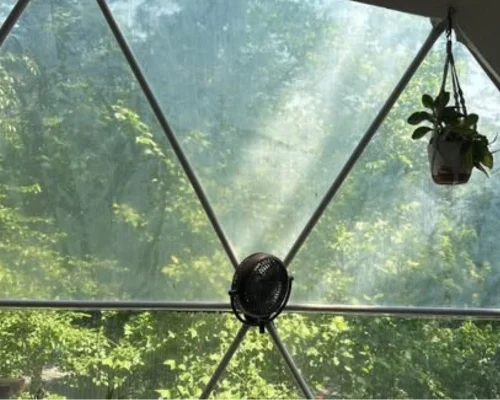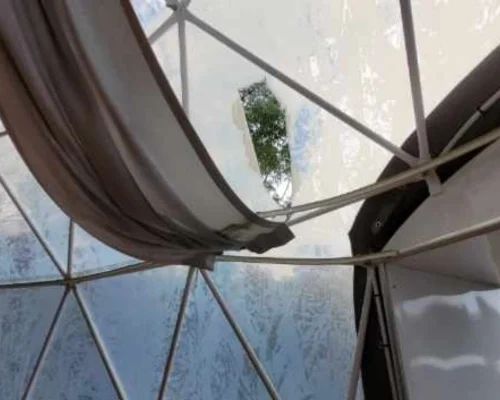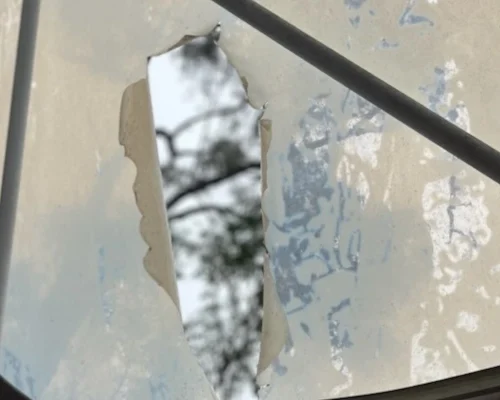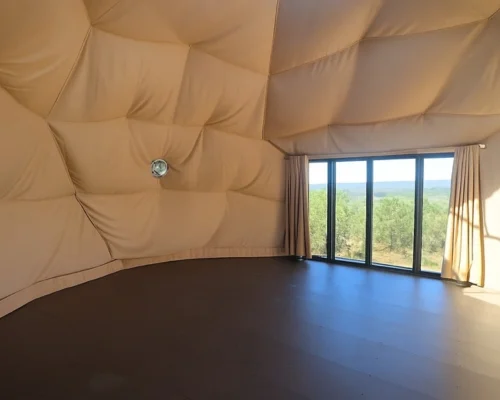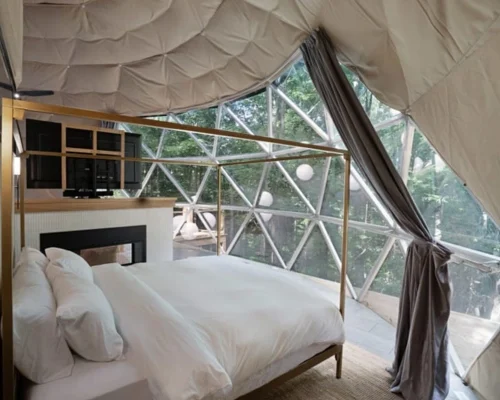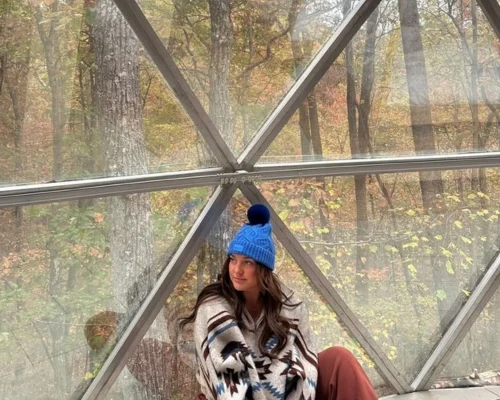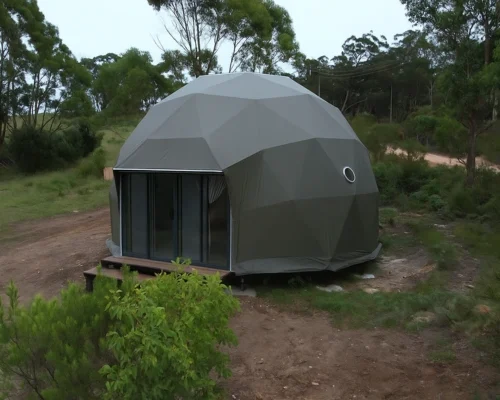
What Many Glamping Operators Regret After Buying Dome Tent
- By dream-domes.com
At first glance, a glamping dome tent seems like the perfect investment: stylish, unique, and guaranteed to attract guests. Yet after just one or two seasons, many glamping operators discover a hidden issue they didn’t consider during purchase—the transparent PVC windows. Instead of showcasing the landscape, these transparent part begin to age, turning yellow, blurry, or even cracking. What was once the highlight of the dome becomes a liability that hurts both guest experience and revenue.
In this article, we’ll take an expert look at why PVC dome tent windows fail so quickly, and what long-term solutions operators should consider to protect their investment.
Why PVC Windows Don’t Last Long in Dome Tents
PVC film is a common choice for dome tent construction because it is lightweight and flexible. But when used as a transparent window, PVC has natural material limitations:
Prolonged exposure to sunlight breaks down PVC molecular chains, causing yellowing and brittleness. In tropical or high-altitude environments, transparency can drop significantly in as little as 12–18 months.
Constant changes between hot days and cool nights accelerate structural fatigue.
Water vapor penetrates microcracks, which eventually expand into visible holes.
The result: blurred views, reduced light transmission, and in many cases, small leaks or perforations. This is not an exception—it’s the natural lifespan of transparent PVC dome windows, typically only 1–3 years.
The Impact on Guest Experience
IDEAL
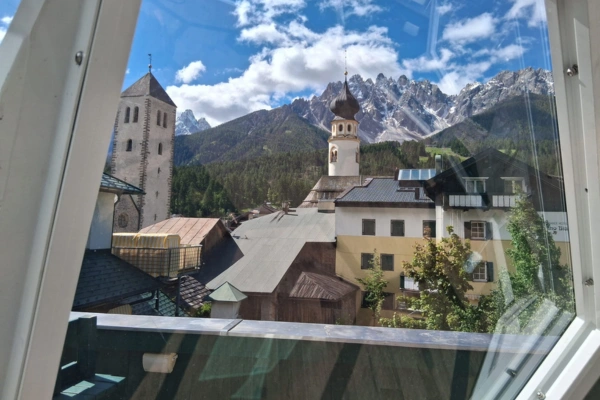
Guests choose a glamping dome tent for one reason: the view.
By day, they expect to enjoy panoramic mountain or lake scenery. By night, they want to lie in bed and gaze at the stars.
REALITY
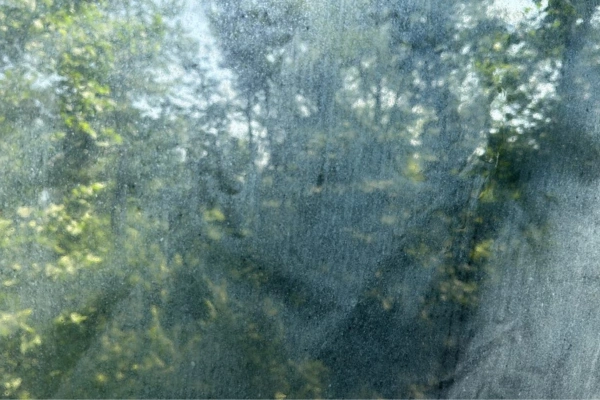
But once PVC windows begin to age:
Photos turn out blurry and unimpressive. Night views lose clarity, and the “clear dome experience” is gone.
Cracks and leaks create discomfort, leaving guests feeling the stay wasn’t worth the price.
Field research shows that when PVC dome tent windows degrade, guest complaints rise by 20–30% and online ratings on platforms like Booking and Airbnb drop by 0.3–0.5 points. Poor reviews directly reduce booking rates, hurting revenue.
Hybrid Dome Tent — A Smarter Upgrade
The industry has responded with a practical solution: the Hybrid Dome. It keeps the structural frame of a dome tent, but replaces the vulnerable PVC dome windows with tempered glass panels.
Advantages of Hybrid dome glass panels include:
- No yellowing, no perforation: Unlike PVC, glass doesn’t degrade under UV exposure.
- Superior clarity: Low-E glass maintains high light transmission for years, ensuring a truly “clear dome view.”
- Weather resistance: Strong against rain, wind, and temperature changes.
- Long lifespan: 8–10 years of durability with minimal maintenance.
For guests, this means the iconic “transparent dome experience” is preserved season after season.
Cost Efficiency and ROI
PVC DOME | HYBRID DOME | |
|---|---|---|
Initial Investment | Lower cost | Higher cost |
Usage Lifetime | 2-3 years requires replacement of transparent PVC window | 50 years without the need to replace glass window |
Visual Experience | Becomes yellowish, cloudy, and develops holes after 1-2 years | Maintains clear transparency for a long period, suitable for photography and stargazing |
Maintenance Costs | Requires material and labor fees every 2-3 years | Basically no maintenance required |
Operational Loss During Maintenance | Requires downtime during replacement → minimal downtime of 3-5 days, worse during rainy season | No downtime, stable operation |
Customer Satisfaction | Due to cloudiness/leakage, can lead to complaints and withdrawals | High-end experience, social media exposure, tourist attraction |
Long-term ROI | Easy to install, but cumulative replacement and downtime are higher | One-time investment, long-term returns, higher guest retention rate and stability |
From a business perspective, the choice of window material is not only about upfront cost—it’s about long-term ROI.
An often-overlooked factor: operational loss during maintenance.
When replacing PVC dome tent windows, the dome must be taken out of service. On average, replacement takes 3–5 days. During peak season, this could mean dozens of lost bookings. Guests may cancel or turn to competing campsites, resulting in both direct revenue loss and long-term damage to reputation.
Thus, a durable dome tent with glass panels = fewer repairs, less downtime, and higher occupancy rates. When viewed through a financial lens, the ROI of upgrading dome windows becomes clear.
In today’s fast-growing glamping market, guest expectations are higher than ever. A blurry or yellowed dome window does more than obscure the view—it undermines guest satisfaction, online reputation, and long-term profitability.
Maintaining a clear dome durability standard is not just about aesthetics; it’s about protecting your business model. For operators, investing in long-lasting solutions ensures that the dome tent continues to deliver what guests value most: an unforgettable view.
Don’t let aging PVC windows ruin your dome experience. Upgrade your dome tent with Hybrid Glass Panels and give your guests the crystal-clear view they expect.
Related Posts

